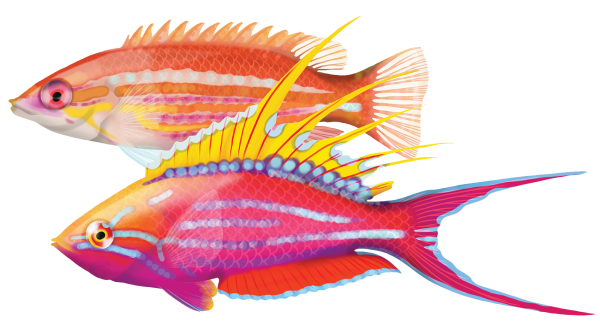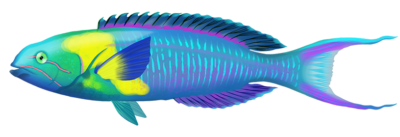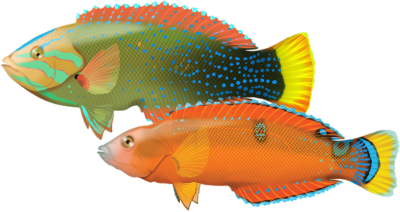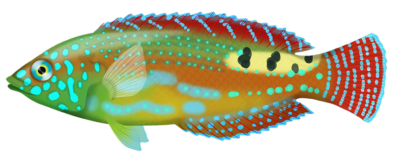Quick Facts
Distribution
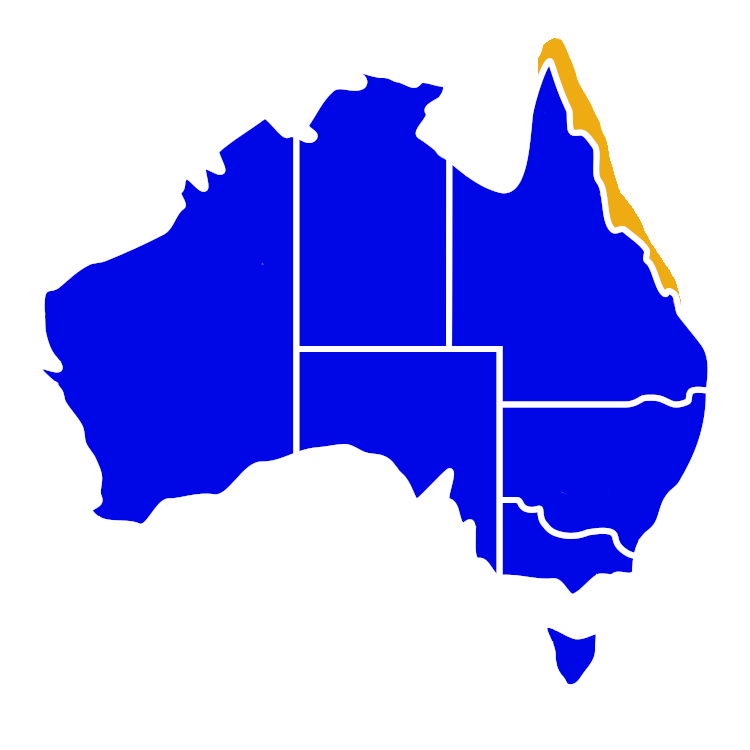
Interesting Info
- The filamentous wrasse, is a small marine fish species commonly found in the tropical waters of the Western Pacific Ocean, including the Great Barrier Reef in Queensland, Australia.
- The colour of the filamentous wrasse varies depending on the sex and age of the fish. The males have a reddish-orange body with blue lines or spots on the fins and tail, while the females are pale with a yellow tail.
- The filamentous wrasse are carnivorous and feed on a variety of small invertebrates and zooplankton.
- They are a protogynous hermaphrodite, meaning that it is born as a female and can later change into a male.
- The filamentous wrasse can spawn throughout the year, with peak spawning occurring during the summer months. They havea low reproductive output, with females producing only a few hundred eggs per breeding cycle.
- Estimated lifespan is up to 5 years in the wild.
Species Interaction
Aquarium, Snorkeling & Diving
The filamentous wrasse is a popular species among marine aquarium enthusiasts due to its striking coloration and peaceful nature. They are considered to be relatively easy to care for. Filamentous wrasses are also very active fish, and they can often be seen swimming in groups around coral reefs and other underwater structures. They are not afraid to approach snorkelers and divers, which means that you can get a good look at them up close.
Scientific Classification
Kingdom: Animalia
Phylum: Chordata
Class: Actinopterygii
Order: Perciformes
Family: Labridae
Genus: Paracheilinus
Species: Paracheilinus Filamentosus
Conservation Status
According to the International Union for Conservation of Nature (IUCN), the filamented flasher wrasse has not been assessed for conservation status. However, as with all marine species, they face threats such as habitat degradation, overfishing, and climate change, which can impact their populations and ultimately their conservation status.
Filamentous Wrasse
As Aquarium Fish
Care Level: Moderate
Temperament: Peaceful
Diet: Carnivore
Reef Compatible: Yes
Minimum Tank Size: 40 gallons
Recreational Viewing
- Snorkeling & Scuba
Finding: Easy
Temperament: Peaceful
Location: Inner Reef, Lagoon
Danger: None


